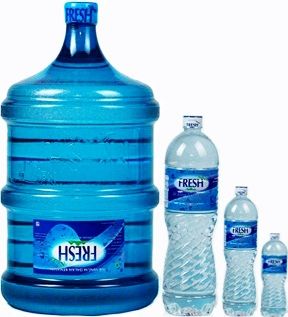Reverse osmosis was developed as a water treatment method more than 40 years ago. The process first arose as a technique of desalinating seawater. Once the method’s decontaminating capabilities were recognized, reverse osmosis systems began to be commercially produced for home water purification purposes. Such systems were installed in homes as early as the 1970s. Reverse osmosis systems seemed a viable option to the more costly and energy-wasteful distillation units.
The Process:
The reverse osmosis process depends upon a semi-permeable membrane through which pressurized water is forced. Reverse osmosis, simply stated, is the opposite of the natural osmosis process of water. Osmosis is the name for the tendency of water to migrate from a weaker saline solution to a stronger saline solution, gradually equalizing the saline composition of each solution when a semi-permeable membrane separates the two solutions. In reverse osmosis, water is forced to move from a stronger saline solution to a weaker solution, again through a semi-permeable membrane. Because molecules of salt are physically larger than water molecules, the membrane blocks the passage of salt particles. The end result is desalinated water on one side of the membrane and a highly concentrated, saline solution of water on the other side. In addition to salt particles, this process will remove a select number of drinking water contaminants, depending upon the physical size of the contaminants. For this reason, reverse osmosis has been touted as an effective drinking water purification method.
Pros and Cons:
Reverse osmosis is a valuable water purification process when mineral-free water is the desired end product. Most mineral constituents of water are physically larger than water molecules. Thus, they are trapped by the semi-permeable membrane and removed from drinking water when filtered through a reverse osmosis system. Such minerals include salt, lead, manganese, iron, and calcium. Reverse osmosis will also remove some chemical components of drinking water, including the dangerous municipal additive fluoride.
Although reverse osmosis does extract several contaminants from drinking water, its removal capabilities are not ideally suited to the challenges of the municipally treated water that the overwhelming majority of people receive. Municipal water contains such contaminants as chlorine and volatile organic chemicals (VOCs). Because these contaminants are physically smaller in size than water, the semi-permeable membrane cannot prohibit them from passing through with the water. Thus, they remain in drinking water.
Reverse osmosis, also, by removing alkaline mineral constituents of water, produces acidic water. Acidic water can be dangerous to the body system, causing calcium and other essential minerals to be stripped from bones and teeth in order to neutralize its acidity. Trace elements of minerals were intended to be in water; their removal leaves tasteless, unhealthy drinking water.
Reverse osmosis, although it is less wasteful than distillation, is still an incredibly inefficient process. On average, the reverse osmosis process wastes three gallons of water for every one gallon of purified water it produces.


.jpg)


.jpg)
.jpg)
.jpg)
.jpg)
.jpg)
.jpg)
.jpg)

